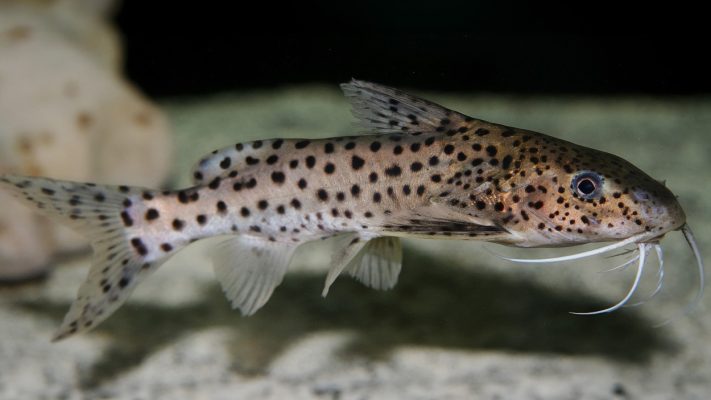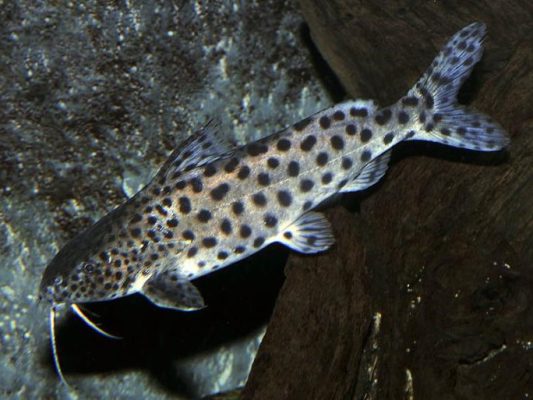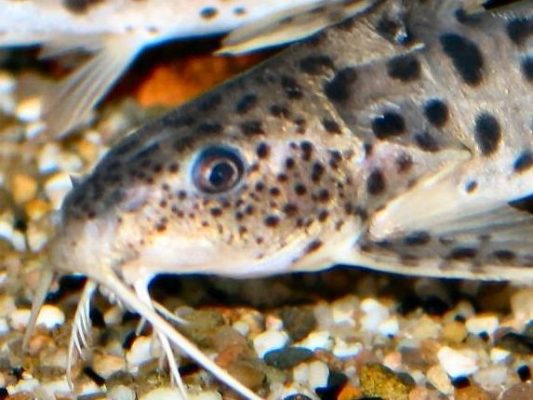Lake Malawi Syno

Table of Contents
- Introduction
- Taxonomy and Classification
- Habitat and Distribution
- Behavior and Adaptations
- Ecological Role and Interactions
- Conclusion
Introduction
Lake Malawi, located in southeastern Africa, is one of the largest and most biodiverse lakes on the continent. Spanning approximately 29,600 square kilometers, it is renowned for its crystal-clear waters and stunning landscapes. The lake is home to an astounding array of fish species, making it a haven for fish enthusiasts and researchers alike.
The unique ecosystem of Lake Malawi supports an estimated 1,000 species of fish, with new discoveries still being made. This unparalleled biodiversity has earned the lake the nickname “The Lake of Stars,” reflecting the shimmering beauty of its inhabitants. Among these species, the Lake Malawi Syno, scientifically known as Synodontis njassae, holds a special place.
The Lake Malawi Syno, commonly referred to as the Lake Malawi Syno, is a species of fish that can only be found in Lake Malawi. It belongs to the Synodontis genus, which encompasses a diverse range of fish species distributed across Africa. However, the Lake Malawi Syno stands out due to its unique characteristics and ecological significance.
Synodontis njassae, the scientific name for the Lake Malawi Syno, reflects its close association with Lake Malawi. This species has captured the attention of fish enthusiasts and researchers worldwide due to its captivating appearance and intriguing behavior.
The Lake Malawi Syno holds great importance within the fishkeeping community and the broader field of conservation. Its striking appearance, with its elongated body and vibrant coloration, has made it a highly sought-after species among aquarium enthusiasts. Understanding the biology and behavior of the Lake Malawi Syno is crucial for its successful care and conservation in captivity.
Furthermore, comprehensive knowledge about the Lake Malawi Syno is essential for the conservation and management of its natural habitat. As a key member of Lake Malawi’s ecosystem, this species plays a vital role in maintaining the delicate balance of the food web. By studying its interactions with other species and its adaptations to its environment, scientists can gain valuable insights into the overall health and functioning of the lake’s ecosystem.
Conservation efforts aimed at protecting the Lake Malawi Syno and its habitat rely on a deep understanding of its biology, distribution, and threats. By shedding light on the significance of this species, we can foster greater awareness and support for its conservation, ensuring its survival for future generations.
Overall, the Lake Malawi Syno represents a fascinating subject of study, both for its intrinsic value as a unique fish species and for its broader ecological and conservation implications. By delving into its taxonomy, habitat, behavior, and interactions, we can unlock a wealth of knowledge that contributes to our understanding of Lake Malawi’s remarkable biodiversity.
Taxonomy and Classification
Overview of the Synodontis genus
The Synodontis genus is a diverse group of fish species that belong to the family Mochokidae. These catfish are commonly known as squeakers or upside-down catfish due to their habit of swimming upside down. The genus includes more than 150 recognized species, making it one of the largest genera of catfish in Africa.
Description of Lake Malawi Syno’s physical characteristics
Lake Malawi Syno, scientifically known as Synodontis njassae, is a species of catfish endemic to Lake Malawi. It is a relatively large fish, with adults reaching an average length of 20-25 centimeters. The body of Lake Malawi Syno is elongated and cylindrical, tapering towards the tail.
One of the distinctive features of Lake Malawi Syno is its bony head, which is covered with small, rough plates. These plates provide protection and support for the fish’s sensory organs and play a role in its feeding behavior. The body coloration of Lake Malawi Syno is variable, ranging from shades of brown to gray, with darker mottling or blotches along the sides.
Discussion of its taxonomic classification
Lake Malawi Syno belongs to the family Mochokidae, commonly known as squeaker catfish. Within this family, it is classified under the genus Synodontis. The genus Synodontis is further divided into several subgenera, with Lake Malawi Syno falling under the subgenus Synodontis.
Lake Malawi Syno is classified under the order Siluriformes, which includes catfish species. The class to which it belongs is Actinopterygii, which comprises ray-finned fishes.
Within the Synodontis genus, there are several other species and subspecies that are closely related to Lake Malawi Syno. These include Synodontis multipunctatus, Synodontis petricola, and Synodontis nigriventris, among others. These species may share some physical characteristics and ecological traits with Lake Malawi Syno but also exhibit unique features that differentiate them from one another.
Understanding the taxonomic classification of Lake Malawi Syno and its related species provides valuable insights into their evolutionary history, ecological relationships, and conservation needs. Further research and genetic studies can help uncover more details about the phylogenetic relationships within the Synodontis genus and shed light on the evolutionary processes that have shaped these fascinating fish species.
In conclusion, Lake Malawi Syno, belonging to the Synodontis genus, is a remarkable fish species found in Lake Malawi. Its physical characteristics, such as the bony head and distinct coloration, set it apart from other fish species in the lake. Exploring its taxonomic classification allows us to better understand its evolutionary context and its place within the diverse family of catfish.
Habitat and Distribution
Description of Lake Malawi’s Ecosystem
Lake Malawi, also known as Lake Nyasa, is a remarkable freshwater lake located in the East African Rift Valley. It is the third-largest lake in Africa and the ninth-largest in the world, covering an area of approximately 29,600 square kilometers. The lake is renowned for its crystal-clear waters, which are a result of low levels of sedimentation and minimal pollution. This exceptional clarity allows sunlight to penetrate deep into the lake, supporting the growth of abundant aquatic vegetation and creating a thriving ecosystem.
Specific Habitats Preferred by Lake Malawi Syno
The Lake Malawi Syno, scientifically known as Synodontis njassae, is highly adapted to the rocky habitats found within the lake. It is commonly found in areas with rocky outcrops, submerged boulders, and crevices. These habitats offer the Lake Malawi Syno protection from predators and provide ample opportunities for foraging.
The fish utilizes its streamlined body and strong pectoral fins to navigate through the rocky crevices, allowing it to move swiftly and efficiently in search of food. The Lake Malawi Syno’s ability to squeeze into narrow gaps between rocks is facilitated by its flexible and elongated body, which enables it to access hidden prey and escape potential threats.
Geographical Distribution of Lake Malawi Syno within the Lake
The distribution of Lake Malawi Syno within Lake Malawi is not uniform, as the species exhibits preferences for specific regions or zones. It is most commonly found in the southern and central parts of the lake, particularly in the vicinity of rocky shores and areas with abundant underwater structures.
In the southern region, Lake Malawi Syno is frequently observed along the shoreline of Cape Maclear and Thumbi Island. These areas are characterized by extensive rocky habitats, providing ideal conditions for the species to thrive. In the central region, the fish is often encountered near the rocky outcrops of Mbenji Island and Nankoma Island.
Depth also plays a role in the distribution of Lake Malawi Syno. While it can be found at various depths, ranging from shallow waters close to the shore to deeper areas, it tends to be more abundant in shallower regions where rocky habitats are prevalent. Environmental factors, such as water temperature and availability of food sources, may also influence the distribution of the species within the lake.
In conclusion, Lake Malawi’s unique ecosystem, with its clear waters and rocky shores, provides a diverse range of habitats that support the flourishing fish populations, including the Lake Malawi Syno. The fish’s preference for rocky areas and crevices allows it to utilize these habitats for protection and foraging. Understanding the specific distribution and habitat preferences of Lake Malawi Syno is crucial for effective conservation and management strategies to ensure the long-term survival of this remarkable species.
Behavior and Adaptations
Lake Malawi Syno, also known as Synodontis njassae, exhibits fascinating behavior and possesses unique adaptations that allow it to thrive in its rocky habitat. Understanding these aspects of its behavior and adaptations is crucial for comprehending its ecological role and ensuring its conservation.
Feeding habits and diet of Lake Malawi Syno
Lake Malawi Syno is an omnivorous species, displaying a diverse diet that includes insects, crustaceans, and invertebrates. Its feeding habits are highly adaptable, allowing it to exploit various food sources within its habitat. Studies have shown that Lake Malawi Syno is primarily a benthic feeder, meaning it feeds on organisms found at the bottom of the lake.
One interesting feeding behavior observed in Lake Malawi Syno is its ability to suck in prey items using its specialized mouth structures. Its mouth is equipped with fleshy lips and strong teeth, enabling it to create a suction force that allows it to capture small invertebrates and crustaceans hiding in crevices or under rocks. This feeding strategy allows Lake Malawi Syno to efficiently forage for food in its rocky habitat.
Reproductive behavior and breeding strategies
Lake Malawi Syno exhibits unique reproductive behavior and employs various strategies for successful breeding. The species has a well-defined breeding season, typically occurring during the rainy season when water conditions are optimal. During this time, male Lake Malawi Syno engage in elaborate courtship rituals to attract females.
Courtship displays involve males actively pursuing females, displaying their vibrant coloration, and engaging in fin-flaring and body movements to demonstrate their fitness and readiness to mate. These displays not only serve as a means of attracting mates but also play a role in establishing dominance and hierarchy among males.
Once a female is receptive, she will select a suitable nesting site, often a crevice or cavity in the rocky substrate. The female will lay her eggs in the chosen location, and the male will guard the nest, ensuring the safety of the eggs until they hatch. This parental care is a crucial aspect of Lake Malawi Syno’s reproductive strategy, contributing to the survival and development of the offspring.
Unique adaptations of Lake Malawi Syno to its environment
Lake Malawi Syno possesses several unique adaptations that enable it to thrive in its rocky habitat. One notable adaptation is its specialized mouth structures, which aid in feeding and foraging. The bony head of Lake Malawi Syno, combined with its fleshy lips and strong teeth, allows it to scrape and suck invertebrates and crustaceans from rocky surfaces with ease. This adaptation provides the species with a competitive advantage in its niche, ensuring a steady supply of food resources.
Furthermore, Lake Malawi Syno exhibits remarkable camouflage abilities, blending in seamlessly with its rocky environment. Its body is covered in intricate patterns and coloration that mimic the surrounding rocks, making it difficult for predators or prey to spot it. This adaptation enhances its chances of survival by providing effective protection against predation and allowing it to ambush unsuspecting prey.
In addition to these adaptations, Lake Malawi Syno has a unique ability to tolerate low oxygen levels. This adaptation is particularly advantageous in its rocky habitat, where oxygen levels can fluctuate due to water movement and decomposition of organic matter. Lake Malawi Syno’s ability to withstand such conditions ensures its survival even in challenging environmental circumstances.
Overall, the feeding habits, reproductive behavior, and unique adaptations of Lake Malawi Syno contribute to its success as a species in its rocky habitat. These behaviors and adaptations not only enable its survival but also play a vital role in maintaining the ecological balance of Lake Malawi. Understanding and appreciating these aspects of Lake Malawi Syno’s biology are essential for its conservation and the preservation of its unique ecosystem.
Ecological Role and Interactions
Lake Malawi Syno, also known as Synodontis njassae, plays a crucial role in the intricate food web of Lake Malawi. As a predator, this species has a significant impact on the population dynamics of its prey species, contributing to the overall balance and stability of the ecosystem.
Lake Malawi Syno primarily feeds on a variety of organisms, including insects, crustaceans, and invertebrates. Its omnivorous diet allows it to adapt to different food sources available in its habitat. By preying on smaller fish and invertebrates, Lake Malawi Syno helps regulate their populations, preventing overpopulation and maintaining the ecological equilibrium within the lake.
The predation pressure exerted by Lake Malawi Syno has cascading effects on the entire food web. By controlling the abundance of its prey, it indirectly influences the distribution and abundance of other species in the lake. This predator-prey relationship is crucial for maintaining the biodiversity and functioning of the ecosystem.
In addition to its role as a predator, Lake Malawi Syno also interacts with other fish species in Lake Malawi through both competitive and symbiotic relationships. In terms of competition, Lake Malawi Syno competes with other fish species for food and territory. Its ability to occupy rocky areas and crevices gives it a competitive advantage over other species that may not be as well adapted to this habitat.
Lake Malawi Syno also engages in symbiotic relationships with certain species in the lake. For example, it has been observed that Lake Malawi Syno forms mutualistic relationships with cleaner fish. These cleaner fish remove parasites and dead skin from the Syno’s body, providing a valuable service in exchange for a meal.
However, the interactions between Lake Malawi Syno and other species are not limited to competition and mutualism. The potential impacts of environmental changes, such as pollution and climate change, on Lake Malawi Syno and its interactions with other species are a growing concern.
Studies have shown that environmental changes can disrupt the delicate balance of the lake’s ecosystem, affecting the behavior and population dynamics of Lake Malawi Syno. Pollution from human activities, such as agricultural runoff and industrial waste, can degrade water quality and negatively impact the health and survival of the species. Climate change, including rising water temperatures and altered rainfall patterns, can also have profound effects on the distribution and behavior of Lake Malawi Syno.
Research conducted on this topic has highlighted the vulnerability of Lake Malawi Syno to these environmental changes. It is crucial to continue studying the potential impacts and developing conservation strategies to mitigate the threats posed by pollution and climate change. By understanding the ecological role and interactions of Lake Malawi Syno, we can better appreciate the importance of preserving its habitat and ensuring the long-term survival of this unique species.
In conclusion, Lake Malawi Syno plays a vital role in the food web of Lake Malawi as a predator, regulating the populations of its prey species and contributing to the overall balance of the ecosystem. Its interactions with other fish species, both competitive and symbiotic, further shape the dynamics of the lake’s biodiversity. However, the potential impacts of environmental changes pose a significant threat to the population and behavior of Lake Malawi Syno. Continued research and conservation efforts are essential to protect this species and maintain the ecological integrity of Lake Malawi.
Conclusion
In conclusion, Lake Malawi Syno, also known as Synodontis njassae, is a fascinating and significant species found in Lake Malawi, one of Africa’s largest and most biodiverse lakes. Throughout this article, we have explored various aspects of Lake Malawi Syno, including its taxonomy, physical characteristics, habitat, behavior, ecological role, conservation status, and human importance.
Lake Malawi Syno belongs to the Synodontis genus, which is known for its diverse range of species distributed across Africa. However, Lake Malawi Syno stands out with its unique physical appearance, including its bony head and distinct coloration. These features make it easily distinguishable from other fish species in the lake.
The species is highly adapted to its rocky habitat in Lake Malawi, utilizing crevices and rocky areas for protection and foraging. Lake Malawi’s clear waters and rocky shores provide a unique ecosystem that supports a wide range of fish species, including Lake Malawi Syno. Understanding the preferred habitats and distribution of Lake Malawi Syno within the lake is crucial for its conservation and management.
Lake Malawi Syno exhibits interesting feeding habits, being an omnivorous species that consumes insects, crustaceans, and invertebrates. Its reproductive behavior and breeding strategies are also noteworthy, with specific adaptations and courtship rituals employed for successful reproduction.
As a predator, Lake Malawi Syno plays a vital role in the food web of Lake Malawi, impacting the population dynamics of its prey species. Its interactions with other fish species in the lake include both competitive and symbiotic relationships, further highlighting its ecological importance.
However, Lake Malawi Syno faces various threats to its population, including habitat degradation, overfishing, and the introduction of invasive species. These factors contribute to its vulnerability and emphasize the need for conservation efforts. Ongoing initiatives, such as habitat restoration projects and fishing regulations, aim to protect Lake Malawi Syno and ensure its long-term survival.
Scientific research on Lake Malawi Syno has provided valuable insights into its ecology, behavior, and genetics. Significant studies have contributed to our understanding of the species, but there are still unanswered questions and areas for future research. Further studies can have implications for the conservation and management of Lake Malawi Syno and its ecosystem.
Lake Malawi Syno holds not only ecological significance but also cultural importance in local communities. It plays a crucial role in local fisheries, contributing to food security and livelihoods. Traditional beliefs and practices associated with the fish add to its cultural significance, and there is potential for economic value through sustainable tourism and recreational fishing.
Lake Malawi Syno is a unique and important species in Lake Malawi, both ecologically and culturally. Continued research, monitoring, and conservation efforts are essential to ensure its survival and the preservation of its ecosystem. By understanding and protecting Lake Malawi Syno, we can contribute to the conservation of one of Africa’s most biodiverse lakes and the species that call it home.



